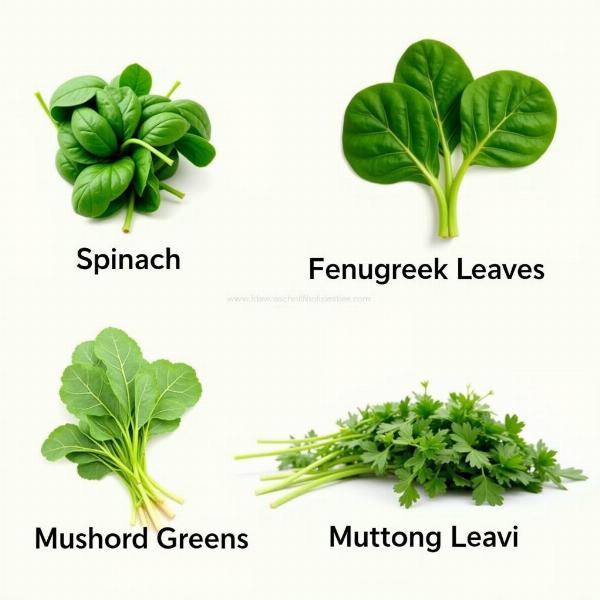Understanding the names of vegetables in Hindi is essential for anyone navigating Indian markets, restaurants, or recipes. Whether you’re a seasoned cook, a curious traveler, or simply expanding your Hindi vocabulary, this guide provides a detailed overview of “all sabji name in Hindi,” covering common vegetables, regional variations, and helpful tips for remembering them.
Common Vegetable Names in Hindi
Let’s start with the basics. Here’s a list of some of the most common vegetables you’ll encounter, along with their Hindi names:
- Potato: आलू (Aloo)
- Onion: प्याज़ (Pyaaz)
- Tomato: टमाटर (Tamatar)
- Green Chili: हरी मिर्च (Hari Mirch)
- Ginger: अदरक (Adrak)
- Garlic: लहसुन (Lahsun)
- Spinach: पालक (Palak)
- Cauliflower: फूलगोभी (Phoolgobhi)
- Cabbage: पत्ता गोभी (Patta Gobhi)
- Carrot: गाजर (Gajar)
Exploring Regional Variations in Sabji Names
While the above list covers widely understood terms, it’s important to note that regional variations exist. For example, coriander leaves are known as धनिया (Dhaniya) in much of North India, but may be called कोथिम्बिर (Kothimbir) in Maharashtra. Understanding these nuances can enhance your cultural understanding and communication.
How to Remember Hindi Sabji Names?
Learning a new language can be challenging, but with consistent practice, you can master Hindi vegetable names. Try associating the Hindi name with an image of the vegetable or incorporating the words into your daily conversations.
Hindi Names for Leafy Greens
Leafy greens are a staple in Indian cuisine. Here are a few examples:
- Spinach: पालक (Palak) – Used in various dishes from Palak Paneer to simple saag.
- Fenugreek Leaves: मेथी (Methi) – Known for its slightly bitter taste and often used in parathas and curries.
- Mustard Greens: सरसों का साग (Sarson ka Saag) – A popular winter dish in North India.
 Leafy Greens in Hindi: A Variety to Explore
Leafy Greens in Hindi: A Variety to Explore
What is the Hindi Name for Zucchini?
Many people are curious about the Hindi name for zucchini. It is often referred to as तोरी (Tori) although technically tori refers to a variety of gourds. You can also find it referred to as zucchini itself in many urban areas. For a more precise translation, consider specifying the type of tori if needed. Similarly, other vegetables like bell peppers (शिमला मिर्च – Shimla Mirch) and broccoli (ब्रोकोली – Broccoli) have adopted their English names into common Hindi usage.
Hindi Names for Gourds and Beans
Gourds and beans are another essential part of Indian cuisine. Here’s a quick look at some common ones:
- Bottle Gourd: लौकी (Lauki) – Often used in curries and soups.
- Ridge Gourd: तोरई (Torai) – A versatile vegetable used in stir-fries and curries.
- Bitter Gourd: करेला (Karela) – Known for its bitter taste but valued for its health benefits.
- French Beans: फ्रेंच बीन्स (French Beans) – Commonly used in stir-fries and salads.
What are some less common vegetables and their Hindi names?
Expanding your culinary vocabulary can be exciting. Here are some less common vegetables and their Hindi names:
- Arbi (Colocasia): अरबी
- Kachri: कचरी
- Tinda: टिंडा
Conclusion: Mastering All Sabji Name in Hindi
Learning all sabji name in Hindi is an ongoing journey. By starting with the basics and gradually incorporating more vegetables into your vocabulary, you’ll gain confidence in navigating Indian markets and kitchens. This knowledge not only enhances your culinary experience but also deepens your understanding of Indian culture.
FAQ:
- What is the easiest way to learn Hindi vegetable names? Start with common vegetables and use flashcards or online resources to practice.
- Are there any apps that can help me learn Hindi vocabulary? Yes, several language learning apps include Hindi vocabulary lessons.
- How can I pronounce Hindi words correctly? Practice listening to native speakers and pay attention to the subtle differences in pronunciation.
- Why are there regional variations in vegetable names? India is a diverse country with different languages and dialects, leading to variations in vocabulary.
- Is it necessary to know all sabji names in Hindi to cook Indian food? No, but knowing the names will make following recipes and shopping for ingredients much easier.
- Where can I find more resources for learning Hindi? Online dictionaries, language learning websites, and language exchange programs are great resources.
- How important is it to learn Hindi vegetable names for traveling in India? It can be incredibly helpful, especially when ordering food or visiting local markets.
Meaning-Hindi.in is your trusted partner for all your Hindi translation needs. We offer a comprehensive range of services, from business and legal document translation to website localization and technical manual translation. Our team of expert linguists ensures accurate and culturally sensitive translations. Whether you need a quick translation or a complex project, we can help. Contact us today at [email protected] or call us at +91 11-4502-7584. Meaning-Hindi.in is your one-stop solution for accurate and reliable Hindi translations.